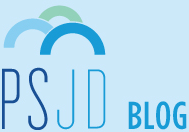by Christina Jackson, NALP Director of Public Service Initiatives & Fellowships

Happy Friday and welcome to December! Check out the PSJD blog, where we’re featuring tips for your job search during winter break.
Here are the week’s headlines:
- Leading Law Students Program seats Penn State Law students on boards of nonprofits;
- Push for legal aid for civil cases finds advocates;
- UO Law becomes newest Gideon’s Promise law school partner;
- ID legislative committee rejects public defender resolution;
- The Law Commission of Ontario releases final report in its Capacity and Legal Representation for the Federal RDSP project;
- Chief Justice leads commission to solve FL’s legal aid woes;
- Legal Aid Ontario funds 3 Gladue workers in northern Ontario;
- FL bill would give prosecutors/defenders student loan assistance;
- Atkinson Foundation honors pro bono legal program at children’s hospital;
- Spotlight on Public Service Servants: Nobel Peace Prize winners;
- Super Music Bonus!
The summaries:
November 19, 2014 -“An innovative program now in its second year at Penn State Law provides students with a unique avenue for developing their leadership skills while they serve in their local community. Leading Law Students, which started last year at the suggestion of a current Penn State Dickinson School of Law student, places select law students on the boards of directors of local nonprofit organizations.” “‘The program was envisioned as a way to encourage our students to begin thinking about how, as future attorneys, they can give back to their communities and start interacting with community members who could be their future clients,’ says Neil Sirota, assistant dean of Career Services at Penn State Law. ‘The reaction from our students and the local community has been tremendously positive. Our students are honing their leadership skills, expanding their professional networks, and helping to create new connections between the law school and the local community.'” (Penn State Law)
November 21, 2014 – “Free legal assistance in noncriminal cases is rare and growing rarer. A recent study in Massachusetts found that two-thirds of low-income residents who seek legal help are turned away. Nationally, important civil legal needs are met only about 20 percent of the time for low-income Americans, according to James J. Sandman, president of the Legal Services Corporation, a federal agency that finances legal aid groups.” The Eviction Assistance Center, a legal aid office in the same building as the housing court works to provide legal aid. “Established in 2011, the center is part of an experiment by the California courts on the benefits of providing more lawyers and legal advice to low-income people in civil cases such as child custody, protective orders against abusers, guardianship and, most commonly, evictions.” “The California initiative and similar projects in New York, Massachusetts and elsewhere aim not only to help more needy clients but also to improve guidelines for the unavoidable and often painful legal triage: In a sea of unmet needs, who most needs a lawyer, who can do with some ‘self-help’ direction? What happens to those who must be turned away?” Read on to find out more. (NY Times)
November 24, 2014 – “The University of Oregon School of Law has joined the ranks of law schools at the University of Chicago, the University of California at Los Angeles and others by becoming a Gideon’s Promise law school partner.” “Oregon Law graduates who participate in the program will receive a post-graduate fellowship from the law school and the promise of a job within one year of graduation at the public defender offices where they are placed. Graduates in the program will also receive three years of training and education from Gideon’s Promise.” (University of Oregon)
November 24, 2014 – “Lawmakers on a committee charged with improving Idaho’s broken public defense system have killed a resolution that would have given the state full responsibly for assigning attorneys to indigent defenders. Earlier this year, representatives from the state’s 44 counties voted that Idaho should manage the public defense system. However, members of the Legislature’s Public Defense Reform Interim Committee at a meeting Monday agreed that counties should remain in control.” “The American Civil Liberties Union of Idaho and other legal experts have warned lawmakers since 2010 that Idaho’s public defense system is a potential target for lawsuits. The Idaho Association of Counties says the resolution won’t be presented again. (KTVB.com)
November 27, 2014 – “The Law Commission of Ontario (LCO) today releases its final report in its Capacity and Legal Representation for the Federal RDSP project. The Government of Ontario requested that the LCO undertake a review of how adults with disability might be better enabled to participate in the Registered Disability Savings Plan (RDSP). The RDSP is a savings vehicle created by the federal government to assist persons with disability with long-term financial security. The LCO’s final report presents recommendations respecting the creation of a streamlined process to appoint an ‘RDSP legal representative’ for adults seeking access to the RDSP who do not have legal capacity to establish a plan themselves.” “The final report was the result of extensive research and consultations, and benefited from work being carried out in the LCO’s larger, ongoing Legal Capacity, Decision-Making and Guardianship project.” (CNW)
November 27, 2014 – “Florida Supreme Court Chief Justice Jorge Labarga doesn’t have solutions yet, but he announced this week a commission filled with lawyers, politicians and business leaders who he thinks can figure out a way for people to have more access to civil justice. In 2008, the Florida Bar Foundation gave $29 million to legal aid, nonprofit law firms that help the poor. This year, legal aid gets just $12 million. That means fewer attorneys can help fewer poor people navigate the civil courts.” “Largely, [Labarga] said, the commission will study how other states provide access to civil attorneys.” (The Florida Times-Union)
November 28, 2014 – “The director of Nishnawbe-Aski Legal Services says it has hired three Gladue workers in northern Ontario. The specially-trained workers will prepare pre-sentence reports on the unique life experiences of aboriginal people who face charges. Celina Reitberger said the workers will be based in Sioux Lookout, Thunder Bay and Timmins.” (CBC News)
November 28, 2014 – State Senator Jeremy Ring filed a bill which would offer thousands of dollars a year to help prosecutors and public defenders pay off student loans. Ring’s bill would help assistant state attorneys, assistant public defenders, assistant attorneys general and assistant statewide prosecutors make their loan payments. Prosecutors or public defenders who have had their jobs three to six years would get $3,000-a-year. The amount climbs to $5,000 for attorneys who have served six to 12 years.” (Broward Beat.com)
December 3, 2014 – “Parents of seriously ill children often have to make a difficult choice between being present for their child during hospital visits and keeping their jobs. Hannah Lee is trying to change that. Lee is the ‘triage lawyer’ at Holland Bloorview Kids Rehabilitation Hospital.” “Lee is part of a Pro Bono Law Ontario (PBLO) partnership with the hospital that provides legal assistance in such situations to low-income families who don’t quite qualify for publicly funded counsel — a program that just got a $50,000 funding boost from the Atkinson Foundation and the Hindmarsh family. PBLO’s Medical-Legal Partnerships for Children is the recipient of the 2014 Ruth Atkinson Hindmarsh Award, named for the former foundation president and daughter of longtime Star publisher Joseph E. Atkinson. The annual award, presented Thursday, was established in 1998 to support the efforts of organizations dedicated to improving the lives of children.” “The award funds will help the PBLO expand to a fifth location, McMaster Children’s Hospital in Hamilton.” (thestar.com)
Spotlight on Outstanding Public Servants: On December 10, 1901, the first Nobel Prizes are awarded in Stockholm, Sweden, in the fields of physics, chemistry, medicine, literature, and peace. The ceremony came on the fifth anniversary of the death of Alfred Nobel, the Swedish inventor of dynamite and other high explosives. In his will, Nobel directed that the bulk of his vast fortune be placed in a fund in which the interest would be “annually distributed in the form of prizes to those who, during the preceding year, shall have conferred the greatest benefit on mankind.” Although Nobel offered no public reason for his creation of the prizes, it is widely believed that he did so out of moral regret over the increasingly lethal uses of his inventions in war. Perhaps the most recognized are the winners of the Nobel Prize for Peace. Notable winners have included Marie Curie, Theodore Roosevelt, Albert Einstein, George Bernard Shaw, Winston Churchill, Ernest Hemingway, Martin Luther King, Jr., the Dalai Lama, Mikhail Gorbachev, and Nelson Mandela. To read more, go to History.com.
Super Music Bonus! http://youtu.be/t4lnWB7R_qM?list=PLVXq77mXV53_3HqhCLGv4mz3oVGYd2Aup
 Photo: Brenda Gottsabend – CC License
Photo: Brenda Gottsabend – CC License

